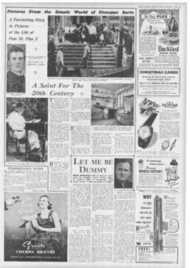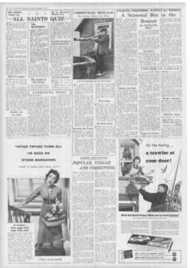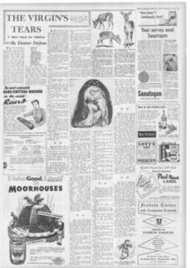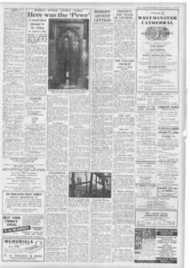Page 5, 2nd December 1955
Page 5

Report an error
Noticed an error on this page?If you've noticed an error in this article please click here to report it.
Tags
Share
Related articles
Full In The Panting Heart Of Rome
Masterpieces In Camera
1, Pictures In Church: No. 395 5 At The Centre
Losing Sight Of Eternity
Books On Art
Otherworldly and Worldly
By IRIS CONLAY
BERNINI, by R. Wittkower (Phaidon. 50s.).
NUNO GONSALVES, by Reynaldo Dos Santos (Phaidon. 42s.).
THE magnificent study of Bernini leads off with a quotation from Henry Moore. " Truth to material," he says, " should not he a criterion of the value of a work-otherwise a snowman made by a child would have to he praised at the expense of a Rodin or a Bernini."
The coupling of Henry Moore's name with that of Bernini leads the mind to realise that although in appearance nothing could be more diverse than modern sculpture and Baroque sculpture, in both periods the artists were searching for the same thing-a vision in space-hut the generation of Moore is interested in earthly space while Bernini was interested in heavenly space.
a
BERNINI was born to be the chief visual interpreter of the Counter-Reformation. We are told that he was himself a devout Catholic and an ardent follower of the Jesuits, practising the Spiritual Exercises.
From the beginning Bernini endeavoured to eliminate the harrier between the work of art and the beholder. He longed, by means of architecture, decoration and sculpture, to create a whole dream-world into which earthly tangible reality could be lost. buried deep in a spiritual, intangible reality.
This chance came to him not in St. Peter's. where his baldacchino was an isolated experiment in this manner. but in the Cornaro Chapel of S. Maria della Vittoria, which enshrines the incomparable St. Teresa, pierced by the angel's flaming arrow.
" On the chapel's vaulting the painted sky opens. angels have pushed aside the clouds so that heavenly light issuing from the Holy Dove can reach the zone in which the mortals live. Rays of this heavenly light fall on to the group of St. Teresa and with the light has descended the seraph whose companions appear in the clouds. The saint is swooning in an ecstatic trance. her limbs hang inert and numb, her head has sunk hack, her eyes are half-closed and the mouth opens in an almost audible moan."
In such words this superb masterpiece of the dawning Baroque world seems to fall out of Heaven. Only in St. Teresa's inspired account can we feel the spirit that is in the Bernini sculpture; " The pain was so great that I screamed aloud, but simultaneously I felt such infinite sweetness that I wished the pain to last eternally. It was the sweetest Caressing of the soul by God."
•
BERNINI has been well served in this book by the photographer's skill, and by the erudition of the compiler of the catalogue raisonna and the introduction. Aimed to coincide with the Portuguese exhibition, Phaidon have brought out a volume of reproductions of the fabulous Nuno Gonsalves' altarpiece, as human and worldly as the Bernini works are transcendental.
Those who have seen the picture will be delighted to be able, at home, to delve further into the picture's richness of detail. The original is above all an illustration and iS thrives on being enclosed in hook form.
Here indeed is a great record of a great picture and the best possible introduction to Portuguese painting.
blog comments powered by Disqus

















